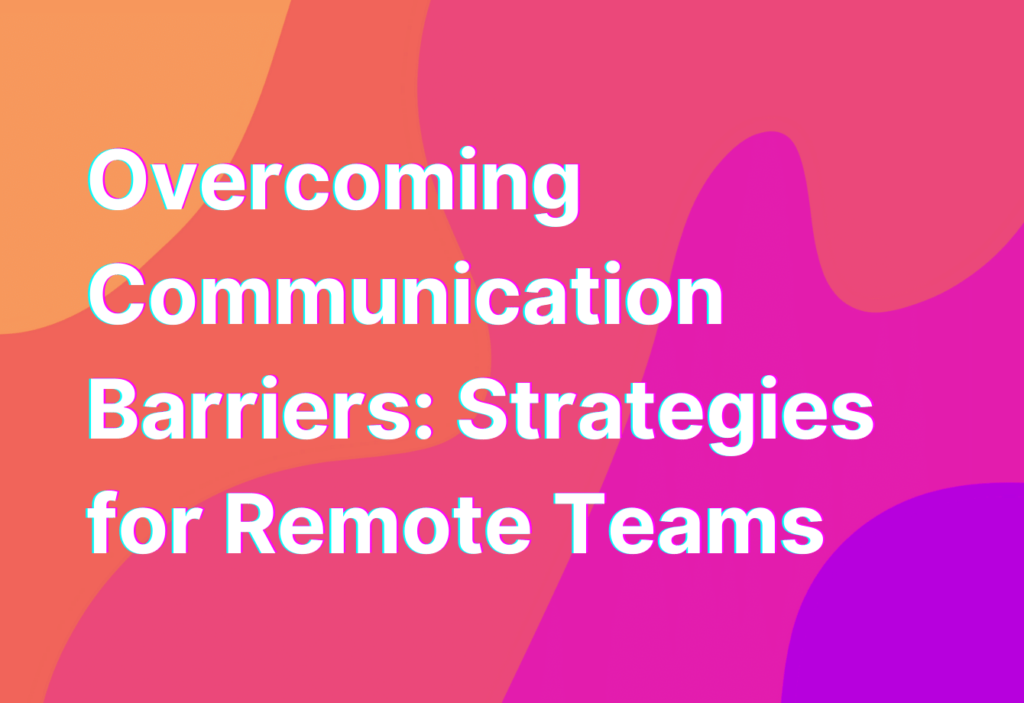Overcoming Communication Barriers: Strategies for Remote Teams
Hey there, fellow remote workers! Ashley here, your friendly remote work advocate with 10 years of experience in the tech industry. Today, I want to talk about a topic that is near and dear to my heart: communication barriers in remote teams. As we all know, effective communication is the key to success in any team, but it can be especially challenging when working remotely. So, let’s dive in and explore some strategies to overcome these barriers and foster better communication within your remote team.
1. Embrace the Power of Video Calls
One of the biggest challenges in remote work is the lack of face-to-face interaction. Without being physically present in the same office, it’s easy for messages to get lost in translation or for important non-verbal cues to be missed. That’s where video calls come in handy! Platforms like Zoom, Microsoft Teams, and Google Meet allow you to have virtual face-to-face conversations with your team members, bridging the gap and making communication more personal.
Pro tip: Make sure to dress appropriately for video calls, even if you’re working from the comfort of your own home. You never know when an unexpected video call might pop up!
2. Utilize Project Management Tools
When working remotely, it’s crucial to have a centralized hub where everyone can access important information, collaborate on projects, and track progress. Project management tools like Trello, Asana, and Monday.com are a remote worker’s best friend. These tools allow you to create tasks, assign them to team members, set deadlines, and keep track of the overall progress. By having all the information in one place, you can avoid miscommunication and ensure that everyone is on the same page.
Pro tip: Did you know that Trello was originally created by a remote team? It’s true! The founders of Trello wanted to create a tool that would help them stay organized and communicate effectively while working remotely. Talk about practicing what you preach!
3. Establish Clear Communication Channels
When you’re not physically present in the same office, it’s important to establish clear communication channels to avoid confusion and ensure that everyone knows where to go for different types of communication. Whether it’s using Slack for quick messages, email for formal communication, or a designated project management tool for collaboration, make sure that everyone on your team is on the same page.
Pro tip: Avoid using too many communication channels, as this can lead to information overload and make it difficult to keep track of conversations. Stick to a few key channels that work best for your team.
4. Foster a Culture of Open Communication
In remote teams, it’s crucial to foster a culture of open communication where team members feel comfortable speaking up, asking questions, and sharing their ideas. Encourage regular check-ins, team meetings, and brainstorming sessions to keep the lines of communication open. Remember, communication is a two-way street, so make sure to actively listen to your team members and provide feedback and support when needed.
Pro tip: Did you know that remote teams often have higher levels of employee satisfaction and engagement compared to traditional office-based teams? It’s true! The flexibility and autonomy that comes with remote work can lead to increased happiness and productivity.
5. Invest in Effective Digital Communication Tools
Lastly, but certainly not least, invest in effective digital communication tools that can help streamline your remote team’s communication. From video conferencing platforms to instant messaging apps, there are countless tools out there designed specifically for remote teams. Do your research, try out different options, and find the tools that work best for your team’s unique needs.
Pro tip: Looking for more tips on effective digital communication for remote teams? Check out this article on Remote Teamer for some in-depth insights and strategies.
Wrapping Up
Communication barriers can be a real challenge for remote teams, but with the right strategies and tools in place, you can overcome them and foster better communication within your team. Embrace the power of video calls, utilize project management tools, establish clear communication channels, foster a culture of open communication, and invest in effective digital communication tools. By doing so, you’ll set your remote team up for success and ensure that everyone is on the same page, no matter where they’re located.
Remember, effective communication is the key to a successful remote team. So, let’s break down those barriers and communicate like pros!


